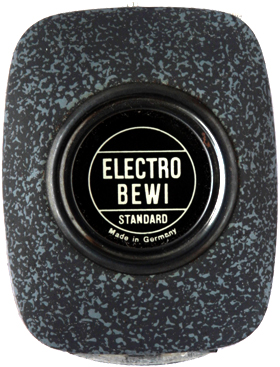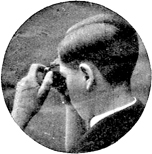
|
|
|
I don't actually own this meter, though it's in my physical possession. It's like a museum; I've got it on a long-term, possibly permanent loan from The Ordover Family. It was originally John Ordover's father's meter, and was in a trunk with other items from that era. Happily, it comes with the original box and instructions, which I have scanned and made available here (click the pdf icon in the upper right portion of the screen), including the original bill of sale from the PX in Germany. Thank you, Ordover Family, for sharing. Bertram made two versions of this meter: this Standard and the Super. I haven't yet determined what the differences between them are. I've held them side by side and they look identical to me, except that my Super is plain black (albiet beat up) whereas this one has a nice gray-stone pattern, and mine has German instructions inside (this one is in English). I'm still working on it. This is a later version, as it says "Standard" on it, and it was available after the War. An earlier version simply says "Electro Bewi" on it, and is pre-World War II. It looks like a make-up compact; you pop open the top and hold it in the palm of your hand at waist-level and look down on the meter face. There's a pop-out lens which looks out at the scene, so you aim it at what you want to measure and read the light level on the meter. Then you can transfer that to the slide-rule calculator at the front of the meter and you're good to go.
|
|
©opyright by James Ollinger. All Rights Reserved.
Company names and models are registered trademarks of their respective owners
and are not affiliated with this website in any way.



 Both these meters also have an unusual secondary feature: if the light level is too low for the regular meter to read, there's an optical-extinction meter built in. If you look at the bottom of the meter (the part you're holding in your hand), there's a tiny little window in the center. If you hold that up and peer through it (leave the cover open), you can see three numerals: 1, 2 and 3. You aim it at the scene for 5 seconds and determine the highest number which appears visible to you. That number is the light level, which can be used on the calculator just like the others.
Both these meters also have an unusual secondary feature: if the light level is too low for the regular meter to read, there's an optical-extinction meter built in. If you look at the bottom of the meter (the part you're holding in your hand), there's a tiny little window in the center. If you hold that up and peer through it (leave the cover open), you can see three numerals: 1, 2 and 3. You aim it at the scene for 5 seconds and determine the highest number which appears visible to you. That number is the light level, which can be used on the calculator just like the others.